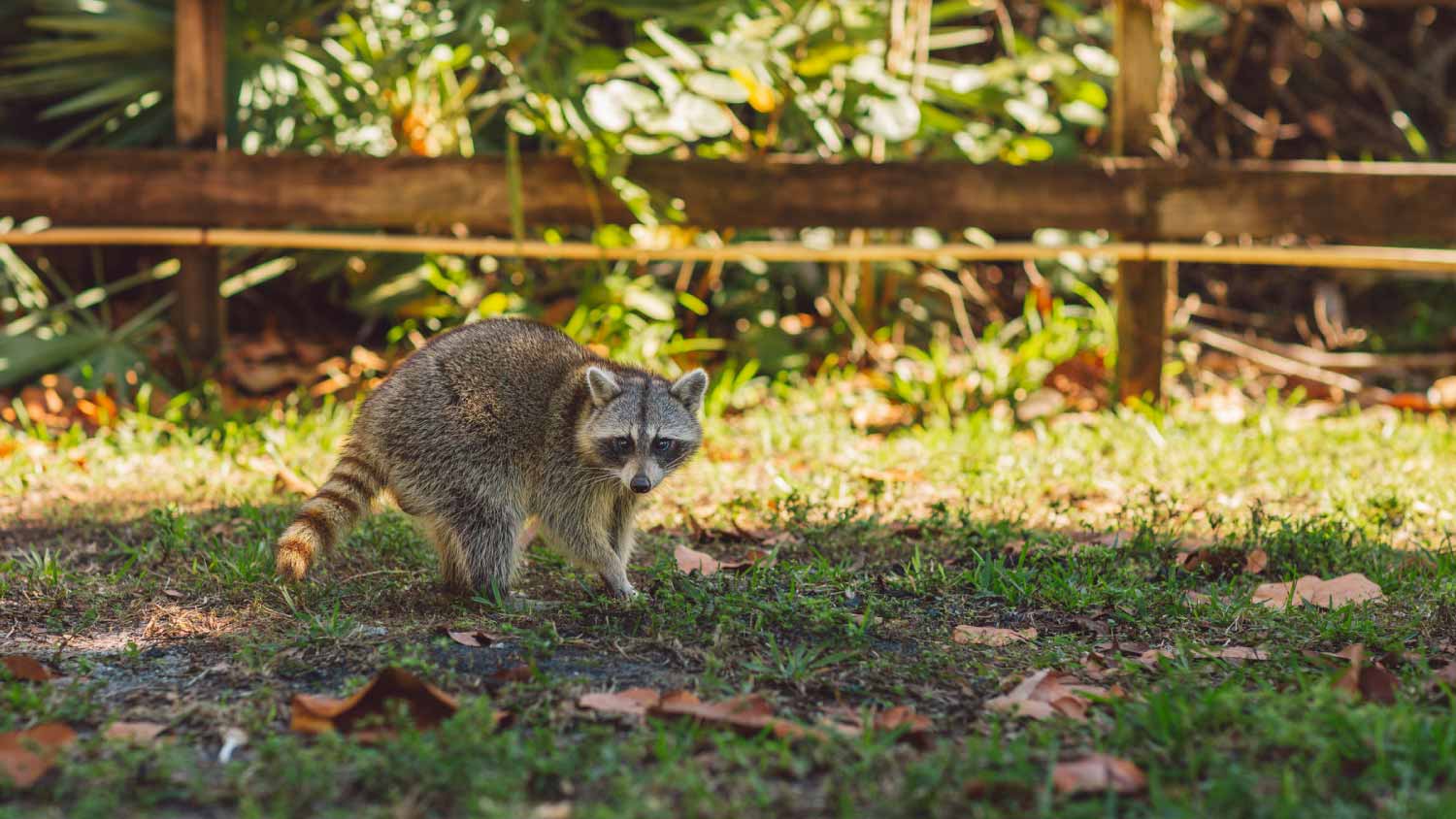
While moles eat termites, ants, and more, they can still be a nuisance. Learn yard mole removal costs, including humane options to decide what’s right for you.
Don't let those masked bandits take over your property


Raccoon infestations are a severe problem that requires prompt attention. These critters carry diseases like rabies and leptospirosis and can cause structural damage to your home by tearing up insulation, chewing wires, and damaging ducts. If you're wondering who to call for raccoon removal, here are the two top experts to know.
A professional, local raccoon control service understands the specific wildlife issues in your area and possesses the training and equipment to comply with regional regulations and humane practices. Also, unlike an animal control center run by your local municipality, these services are more responsive and can swiftly address your specific situation, minimizing damage and health risks. Wildlife removal pros charge $400 to $600 to remove raccoons.

We don’t recommend attempting DIY raccoon removal. Raccoons can be aggressive when threatened, potentially leading to bites or scratches that can carry disease.
Additionally, without the proper training, it's easy to mishandle traps, causing injury to yourself or the animal. Futhermore, pros are better equipped for humane relocation and can help homeowners get rid of raccoons for good.
Your trash may not be as secure as you think it is. Invest in a lockable garbage bin for your food waste to keep animals out of your yard.
Local animal control services, run by city or county governments, can assist with raccoon removal. These services are typically free and adhere to government regulations, ensuring safe and legal practices.
However, there are some drawbacks. Animal control services have limited resources and prioritize emergencies, affecting their availability and response time. Additionally, they are often selective about the types of animals they will handle, so they may only address some wildlife issues in your area but not raccoons.
Lastly, animal control services typically do not offer prevention services to keep these masked critters from returning, leaving homeowners to manage future infestations themselves.
When working with a raccoon removal service, expect an initial inspection to assess your situation. These professionals will identify entry points, the extent of the infestation, and potential risks.
They will then develop a removal plan, including setting traps and using barriers to reduce access to your yard or home. They may also offer repair services for any raccoon-related damage.
Just as important as removal, these experts assist with prevention. This includes sealing all potential entry points and offering advice on making your home and yard less appealing, for instance better securing your garbage, and using wire fencing to protect gardens.
From average costs to expert advice, get all the answers you need to get your job done.

While moles eat termites, ants, and more, they can still be a nuisance. Learn yard mole removal costs, including humane options to decide what’s right for you.

When budgeting for possum removal costs, consider number of animals, location, method of removal, and whether you do it yourself or hire a professional.

The cost to remove a groundhog can vary depending on where you live and whether you do it yourself or hire a professional. We’ll help you figure out the true cost of groundhog removal, along with strategies for humane trapping and release.

Using the best bait for skunks is a great way to capture these critters humanely. Here are the 5 most effective types homeowners can use.

Want to get rid of a bird’s nest on or around your home? Learn what your options are to remove an old inactive nest near your property.

Learning about the differences between moles versus gophers can help you target your pest management strategy to prevent lawn or foundation damage.